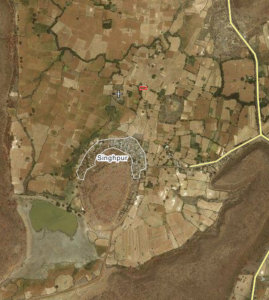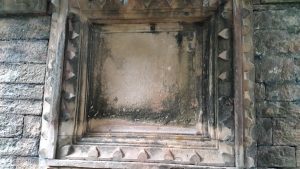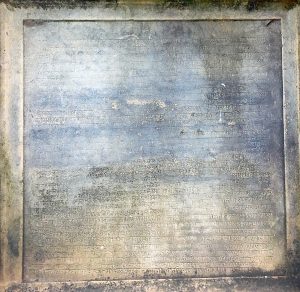Singhpur stepwell with an inscription of VS 1535/1479 CE

Singhpur (Ashoknagar अशोकनगर). Rājmatī stepwell (Wikimapia).

Singhpur stepwell inscription of VS 1535 (© Saarthak Singh).

Singhpur stepwell, damaged companion inscription (© Saarthak Singh).
Singhpur (Ashoknagar). Stepwell with inscriptions in mixed Sanskrit recording the construction of the stepwell by Rājamatī in VS 1535.
Singhpur stepwell inscription of VS 1535/1479 CE

Singhpur (Ashoknagar). Stepwell inscription dated VS 1535 (© Saarthak Singh)
Singhpur (Ashoknagar). Inscription in the Rājmatī stepwell recording the construction of the stepwell by Rājamatī, the daughter of Bhairavadāsa who was the son of Uvāra, the son of Chajjala of Sirohanagara. Gives the details of the gifts and donations made to Rājamatī by several rulers, namely Sher Khān of Chanderi, Ghiyās al-Dīn of Māḍai (i.e. Ghiyāth al-Dīn of Māndū, reg. 1469-1500), Husayn Shāh (reg. 1458-79) of Jauṇapura (i.e. Jaunpur), Barbak Shāh (reg. 1459–74) of Pandua, Sultān (name not given) of Ḍhili (i.e. Delhi), Tughluq Shāh of Thatta [presumably a reference to Jam Tughluq (d. 1442) of the Samma dynasty], Qutb al-Din of Gujarāt [presumably Qutb al-Dīn being applied anachronistically to Maḥmūd Begada, reg. 1458-1511], the Bahmani Sultān (name not given) of Vidara (i.e. Bidar). Also mentions Rājamatī’s son named Rāmacandra who was a mahākavi and a favourite (?) of Ghiyās al-Dīn and Nāsir al-Dīn. The pradhāna was Devidāsa and the masons were Vu(Bu)rahāmatasuṣu(khu), Mūla and others. The writer was Guṇasudara.
Singhpur inscription dated AH 836/1433 CE
Singhpur inscription of AH 836 (= 30 May 1433) records in Persian that during the reign of the king of this world, conqueror of Orissa and Jājnagar, Shāh Hūshang, Malik Haybat Nizām Jāshghūrī excavated this “flowing bounty” (i.e. the tank) in the name of Shaykh Burhān, son of Yaqūb.